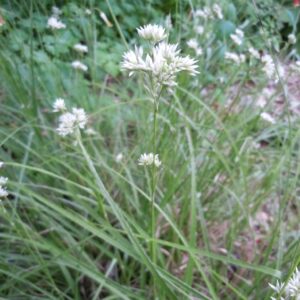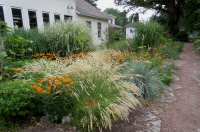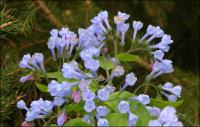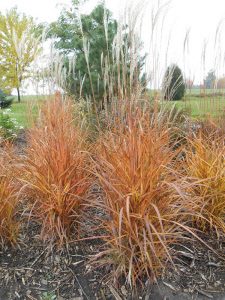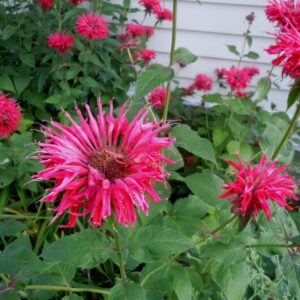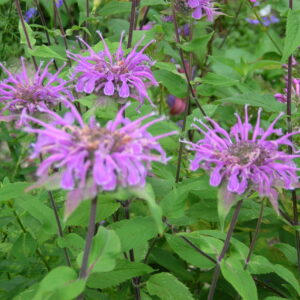Deer Resistant Plants
Showing 89–96 of 155 results
-
Luzula nivea Snowy woodrush 5-8
Very unusual & ornamental grass. Dense Bone-white flower clusters in June-July. Evergreen leaves with hairy margins.
Very unusual & ornamental grass. Dense Bone-white flower clusters in June-July. Evergreen leaves with hairy margins.
Size: 24” x 24”
Care: part shade to shade in moist well-drained to well-drained soil.
Native: Central and southern Europe, AlpsNamed by Linnaeus in 1753. Genus name Latin meaning “light.” Nivea means “snow white.” According to Liberty Hyde Bailey the flowers are “useful in dried bouquets.”(1933)
-
Melampodium leucanthum Blackfoot daisy Z 5-10
No fail low mounds of up to 50 small white daisies spring-fall, atop narrow, hairy, grey-green leaves
OUT OF STOCK
No fail low mounds of up to 50 small white daisies spring-fall, atop narrow, hairy, grey-green leaves
Size: 6-10” x 12-20”
Care: sun to part-shade in well-drained soil. Its tap root reaches down for moisture and hair on foliage protects if from desiccating winds and sun - xeric plant
Native: Colorado, Oklahoma, TX &AZ (no wonder it likes well drained soil) but perfectly happy as far north as 20° below zero in winter.
Wildlife Value: birds eat seeds –pollen and nectar attract bees and butterflies. Deer resistantBotany professor John Riddell found this in Texas, Described in Flora of North America, 1842.
-
Melica ciliata Silky spike melic grass Z 5-9
Ornamental arching white spikes, a fountain, from June through mid-summer.
OUT OF STOCK
Ornamental arching white spikes, a fountain, from June through mid-summer.
Size: 2' x 12"
Care: full sun in moist well-drained to moist soil.
Native: Eurasia to North Africa
Wildlife Value: Deer resistantMelica is Greek for “sweet grass.” Collected before late 1700’s.
-
Mertensia virginica Virginia bluebells Z 3-7
Clusters of pink buds turn to sky blue trumpets in May. Ephemeral, disappearing in summer to return next spring.
Available for purchase in Spring only
Clusters of pink buds turn to sky blue trumpets in May. Ephemeral, disappearing in summer to return next spring.
Size: 18" x 10" spreads slowly
Care: Moist well-drained soil in part shade.
Native: N.Y. to Tennessee, west to Kansas, Wisconsin native
Wildlife Value: Provides nectar and pollen to honeybees, bumble and mason bees, as well as Skipper butterflies and Sphynx moths. Deer resistant.
Awards: Royal Horticultural Society Award of Merit.
Size: Cherokee cured whooping cough and consumption with Virginia bluebells. Other Natives treated whooping cough, venereal disease, and plain poor health with this.First collected by Rev. Banister (1649-1692) in colonial Virginia C. 1690. Named Mertensia after Franz Karl Mertens (1764-1831), a German botanist who never set foot in America. Grown by both Washington and Jefferson.
-
Miscanthus “Purpurascens” Flame grass Z 4-9
leaves turn brilliant orange red, darkening to burgundy
Flame grass starts in spring with a tinge of red in the leaves, increasing as summer passes. By fall the leaves turn orange-red, darkening to burgundy by winter and retaining the color for months. Tassel-like inflorescences appear in late summer, opening into creamy plumes by fall. It is compact, upright, clump-forming.
Size: 3-4’ x 3-4’
Care: sun to part shade in sandy to clay soils. Cut back in late winter to spring. Deer resistant and tolerant of Walnut trees.
Native: JapanMiscanthus is Greek meaning “stem and flower.” Miscanthus was mentioned in Man’yoshu, a Japanese anthology of poems written in the 8th century, where it symbolized the melancholy of autumn. This specific plant 1st described by botanist Nils Johan Andersson in 1855.
-
Monarda didyma ‘Cambridge Scarlet’ Beebalm, Oswego tea
Whorls of scarlet tubes & bracts looking like fireworks, in summer
Whorls of scarlet tubes & bracts looking like fireworks, in summer
Size: 3-4' x spreading
Care: sun to part shade in well-drained soil.
Native: N. E. America
Wildlife Value: Checkered white, Fritillary and Melissa blue butterflies relish Beebalm’s nectar.Cherokee used the species medicinally, to cure colic, flatulence, nosebleed, measles, flu, hysteria and to induce restful sleep. Monarda was named in honor of Nicholas Monardes (1493-1588), a Spanish botanist who wrote about plants of the New World. Discovered by John Bartram (1699-1777) being used by colonists in Oswego N.Y. to make tea. Oswego Indians taught the colonists how to make tea from the dried leaves. Bartram sent this Beebalm to Peter Collinson in England in whose garden it grew in 1744. By 1757 its English availability was “nearly universal” among gardeners. During the American Revolution used as a substitute for tea. Grown at America’s 1st botanic garden, Elgin Botanic Garden 1811.This cultivar ‘Cambridge Scarlet’ recommended by Gertrude Jekyll in 1908.
-
Monarda fistulosa Wild bergamont Z 3-9
Whorls of hooded lavender tubes in July - August
Whorls of hooded lavender tubes in July – August
Size: 3-4' x 2' spreading
Care: Sun to part shade any soil.
Native: central U.S., Wisconsin native
Wildlife Value: Checkered white, Tiger swallowtail, Giant swallowtail and Melissa blue butterflies relish Wild bergamot’s nectar. Supports over 70 bee species including Rusty patched Bumble Bee.Used medicinally by many Native tribes- Blackfoot, Cherokee, Chippewa, Choctaw, Crow, Dakota and Flathead. Cherokee: to cure colic, flatulence, nosebleed, measles, flu, hysteria and insomnia. Blackfoot called it “Single-young-Man.” Teton Dakotas boiled the leaves and flowers to cure abdominal pain. Ho-Chunk boiled the leaves to remove pimples. Choctaws cured chest pain in children. The Flathead cured colds and sore teeth with Wild Bergamot. HoChunk inhaled fumes in a sweat bath to cure colds. Oneidas made a tea. For the Sioux it was nourishment and a panacea: tea, stomach ache, fever, indigestion, sore throats, fainting, whooping cough, wounds, sore eyes, ulcers, and snakebites. First documented by French explorers before 1635. Plant exported to Europe by Tradescant the Younger in 1637. Grown by Washington at Mount Vernon. Today it is a flavor in Earl Grey tea.
-
Nepeta nervosa Catmint Z 4-9
Chubby spikes of many clear blue-purple flowers blooming June-September. Deadhead to rebloom
OUT OF STOCK
Chubby spikes of many clear blue-purple flowers blooming June-September. Deadhead to rebloom
Size: 16-20” x 18-24”
Care: sun in moist to moist well-drained soil
Native: China
Wildlife Value: deer & rabbit resistant, attracts bees & butterfliesNepetas may have been named after Nepete, an old Etrusrian city. Nervosa means with conspicuous veins. Collected before 1833.

